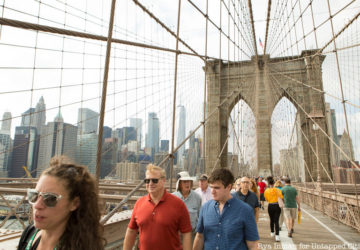Grand Central Terminal is not the only New York landmark celebrating its one-hundredth birthday this year. The Woolworth Building, Manhattan’s gothic-style “Cathedral of Commerce,” was also built in 1913. Upon completion, the Woolworth Building became the tallest skyscraper in the city and the tallest office building in the world, measuring 792 feet from its base to the tip of its spire. The Burj Khalifa in Dubai holds the current world record, at 2,717 feet, but New York City is still home to some of the tallest skyscrapers ever built.
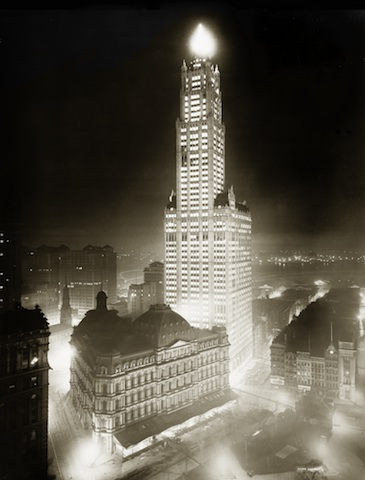
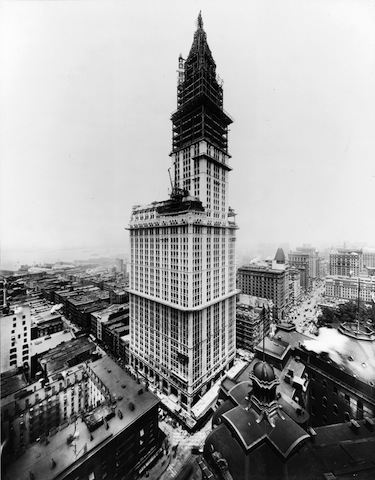
The Woolworth Building was commissioned by the millionaire Frank W. Woolworth, who was one of the wealthiest men in America at the time. Woolworth made a fortune with his five-and-dime stores, which revolutionized the way we shop; his stores were the first in the U.S. to use self-service display cases, allowing customers to browse and collect items without the assistance of a salesperson. (Les Grands Magasins in Paris had already implemented a similar system.) Cass Gilbert was already famous for designing the U.S. Custom House in Lower Manhattan, a beautiful Beaux-Arts masterpiece that now houses the National Museum of the American Indian. After the Woolworth Building was completed, Gilbert went on to design the Chamber of Commerce headquarters (1925) and the Supreme Court Building (1935) in Washington D.C.
The Skyscraper Museum honors the Woolworth Building’s centennial with their new exhibition, “The Woolworth Building @ 100.” The exhibition opens to the public today and runs through July 14. This magnificent tribute, curated by Carol Willis, explores the building’s design, construction and legacy in thorough detail. The reflective surfaces of the floor and ceiling imbue the exhibit with an iridescent, larger-than-life quality. Standing among the giant, wall-sized photos and sketches, I began to feel as though I was actually inside the Woolworth Building—a rare treat, given that the building’s interior has been closed to the public for many years.


A large portion of the exhibition is devoted to the design, artistic production and installation of the building’s terra cotta ornament, manufactured by the Atlantic Terra Cotta Company. The cream-colored terra cotta—sculpted in the form of buttresses, gargoyles, tracery and finials—is what gives the Woolworth Building its signature gothic look. The exhibition features a terra cotta dog head, pictured below, that was removed from the Woolworth Building during its restoration in 1978-1983. Also on display is a plaster mold that was used to create some of the terra cotta replacement pieces.
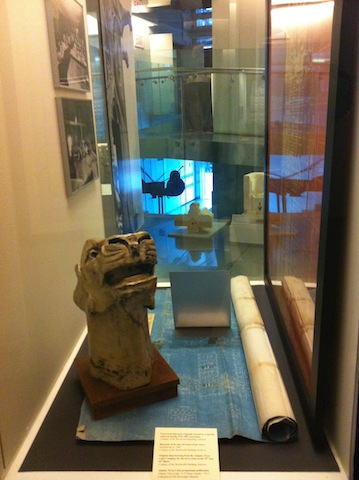
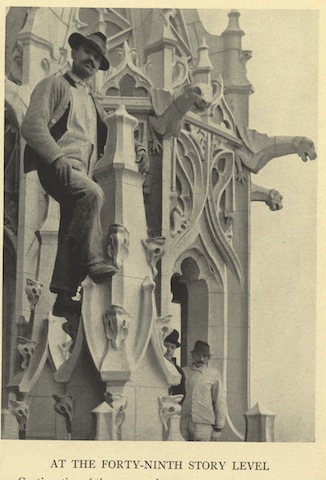
One of my favorite display cases, pictured below, is dedicated to Frank W. Woolworth and features a photograph of the client and the architect together, riding in a pedicab on Palm Beach. Gilbert was the mastermind behind the project, but he worked closely with Woolworth, who liked to oversee—and often second-guess—the architect’s decisions. Despite the occasional tiff here and there, the two men became friends; Gilbert even invited Woolworth to join him on a family vacation to Florida (where the Palm Beach pedicab picture was taken).
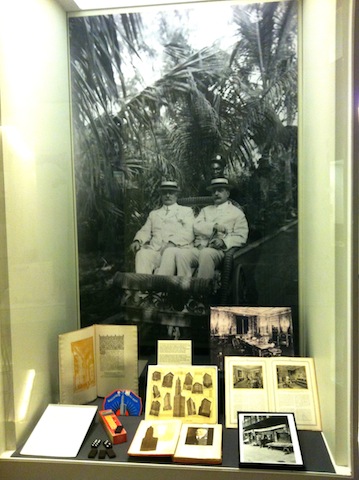
The Woolworth team couldn’t help but include a few inside jokes in the building’s design. In the lobby of the Woolworth, you’ll find cartoonish-looking busts depicting the men involved in the building’s production. One of the highlights of the exhibition is the collection of photographs of these mysterious likenesses; while some of the men in the sculptures have yet to be identified, there is no mistaking the faces of Gilbert and Woolworth, pictured below.

If you are a lover of architecture or a New York history buff, you simply cannot miss “The Woolworth Building @ 100” at the Skyscraper Museum. At the exhibition, you’ll be delighted to discover blueprints, photographs, sketches, paintings, sculptures, a construction worker’s shoe, a set of commemorative Woolworth-themed dominoes, and much more.
“The Woolworth Building @ 100” will run from February 27 through July 14, 2013. The exhibition is open from noon to 6 p.m. on Wednesday through Sunday. $5 for general admission; $2.50 for students and seniors. The Skyscraper Museum is located at 39 Battery Place, New York, NY 10280. Bowling Green is the closest subway stop on the 4/5 line.


